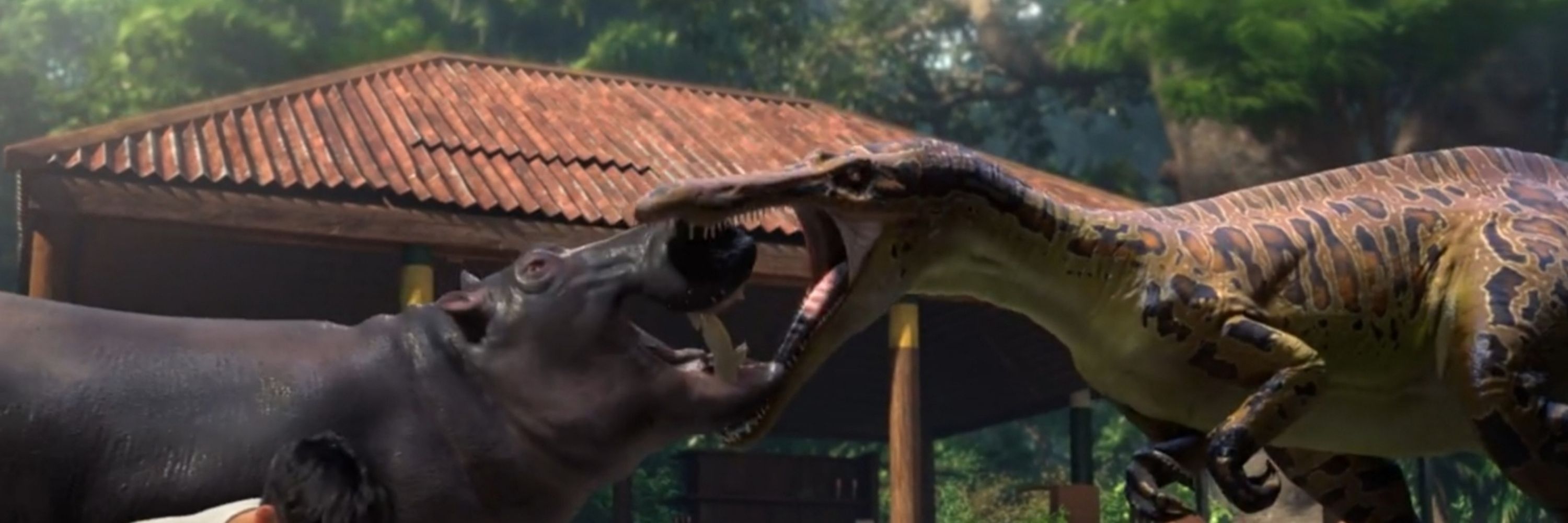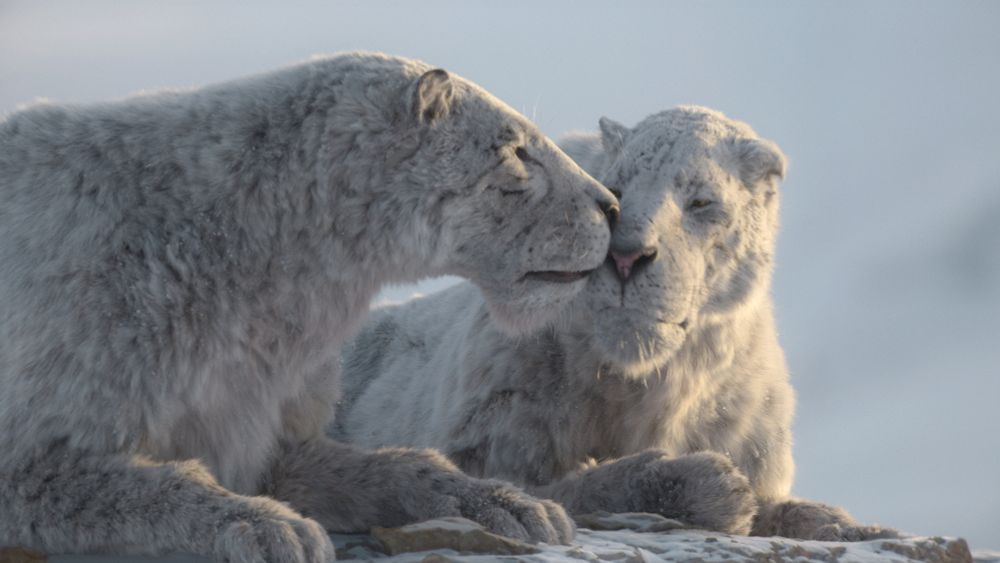
CEO of the Camp Cretaceous fanclub
LGBTQ+, Persian
Give us some thoughts on this fiery episode




Give us some thoughts on this fiery episode
From Early Cretaceous Araripe Basin, Brazil, "comb mouth" is a newly described ctenochasmid filter feeding pterosaur named after its long jaws sporting bristle-like teeth. It was discovered in (checks notes) fossilized dinosaur vomit??!
Arr by Julio Lacerda


From Early Cretaceous Araripe Basin, Brazil, "comb mouth" is a newly described ctenochasmid filter feeding pterosaur named after its long jaws sporting bristle-like teeth. It was discovered in (checks notes) fossilized dinosaur vomit??!
Arr by Julio Lacerda
What are your thoughts on Season 3's third episode? 🦖




What are your thoughts on Season 3's third episode? 🦖
From Late Pleistocene to Holocene New Zealand, "terrible bird" is the largest genus of moa, with females estimated up to 3.6 meters tall and the males being much smaller. They laid giant eggs the size of a rugby ball with a very thin shell


From Late Pleistocene to Holocene New Zealand, "terrible bird" is the largest genus of moa, with females estimated up to 3.6 meters tall and the males being much smaller. They laid giant eggs the size of a rugby ball with a very thin shell








What was your first impression of Gia and Nonna?




What was your first impression of Gia and Nonna?
Check out the teaser for "Calon Arang", a supernatural horror short featuring an entity that takes the form of a Maip. Link below

Check out the teaser for "Calon Arang", a supernatural horror short featuring an entity that takes the form of a Maip. Link below
From Pliocene to Early Pleistocene Eurasia, Africa, and (uniquely for a hyena) North America, "Canyon's Destroyer" is a genus of hyena that evolved a cursorial, canid-like lifestyle rather than the usual bone crushing morphology


From Pliocene to Early Pleistocene Eurasia, Africa, and (uniquely for a hyena) North America, "Canyon's Destroyer" is a genus of hyena that evolved a cursorial, canid-like lifestyle rather than the usual bone crushing morphology
Is this a good start to Season 3?




Is this a good start to Season 3?
From Late Pleistocene to Holocene New Zealand, Haast's Eagle is the largest known true eagle, with females estimated at up to 18kg. Its large size is an evolutionary response to its favorite prey, the 200kg moa
Art by Julio Lacerda


From Late Pleistocene to Holocene New Zealand, Haast's Eagle is the largest known true eagle, with females estimated at up to 18kg. Its large size is an evolutionary response to its favorite prey, the 200kg moa
Art by Julio Lacerda
What do you make of Season 2's finale? Do you like where it leaves the story and characters?




What do you make of Season 2's finale? Do you like where it leaves the story and characters?
What do you make of the bald baddie and his experiments? Did you like spending extra time focusing on the dynamic between our antagonists? 🦖




What do you make of the bald baddie and his experiments? Did you like spending extra time focusing on the dynamic between our antagonists? 🦖
From Late Pleistocene to Holocene Madagascar, "robust crocodile" is a species of recently extinct 5 meter crocodile notable for the extentions of the corners of its squamosal bones that resemble horns. Its limbs were relatively robust
Art by Literally Miguel


From Late Pleistocene to Holocene Madagascar, "robust crocodile" is a species of recently extinct 5 meter crocodile notable for the extentions of the corners of its squamosal bones that resemble horns. Its limbs were relatively robust
Art by Literally Miguel
What do you make of Season 2 Episode 8? 🦖




What do you make of Season 2 Episode 8? 🦖




From Late Miocene to Early Pleistocene Africa, India, and Pakistan, "otter tooth" is an extinct genus of otters, with some species reaching sizes comparable to lions. It used its advanced dentition to crush prey items or feed on carion


From Late Miocene to Early Pleistocene Africa, India, and Pakistan, "otter tooth" is an extinct genus of otters, with some species reaching sizes comparable to lions. It used its advanced dentition to crush prey items or feed on carion
IT IS TIME...FOR THE TRAILER BREAKDOWN THREAD! (1/?)
threadreaderapp.com/thread/19864...




IT IS TIME...FOR THE TRAILER BREAKDOWN THREAD! (1/?)
threadreaderapp.com/thread/19864...
AAAAAAAA LOOKS AMAZING!! ❄️




AAAAAAAA LOOKS AMAZING!! ❄️
On the plus side, this gives us even more quality Suchomimus time before it all leads to a major climactic fight. What are your thought on Season 2 Episode 7? 🦖




On the plus side, this gives us even more quality Suchomimus time before it all leads to a major climactic fight. What are your thought on Season 2 Episode 7? 🦖
That's... that's something. From Late Cretaceous Japan, "wonderful stone"'s ox-bow bends make for one of the most bizarre shapes of any ammonite. Like other nostoceratids, its ecology is subject to speculation
Art by PrehistoryByLiam


That's... that's something. From Late Cretaceous Japan, "wonderful stone"'s ox-bow bends make for one of the most bizarre shapes of any ammonite. Like other nostoceratids, its ecology is subject to speculation
Art by PrehistoryByLiam
#BackInHell

#BackInHell
My drawing of Nanotyrannus, whose return to life makes Hell Creek ever more fascinating. Since it seemingly falls outside tyrannosauridae, I've given it a feathery coat to reflect its slightly more basal position

My drawing of Nanotyrannus, whose return to life makes Hell Creek ever more fascinating. Since it seemingly falls outside tyrannosauridae, I've given it a feathery coat to reflect its slightly more basal position
Did you enjoy the Suchomimus vs. Hippo fight? 🦖




Did you enjoy the Suchomimus vs. Hippo fight? 🦖
From Pleistocene Madagascar, the cave fossa was a larger species of fossa with robust dentition for hunting large prey. Interestingly, there are accounts from scientific sources claiming to have seen "large black fossa" as recently as 1989


From Pleistocene Madagascar, the cave fossa was a larger species of fossa with robust dentition for hunting large prey. Interestingly, there are accounts from scientific sources claiming to have seen "large black fossa" as recently as 1989

